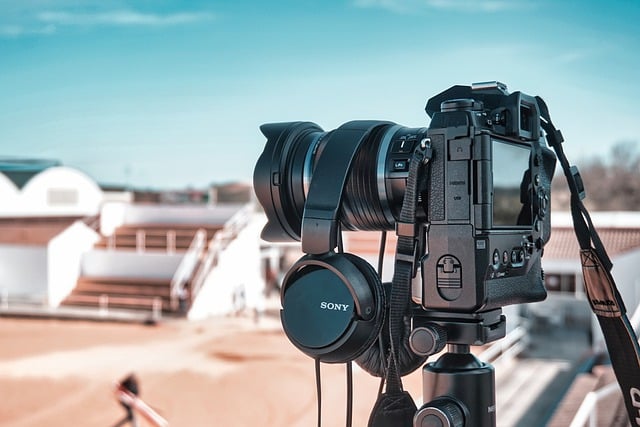Video compression is key for enjoying high-quality video on Smart TVs, like playing DivX files. It shrinks file sizes by removing unnecessary data while keeping essential visuals intact. There are two main types: lossy compression reduces size by discarding some data, suitable for streaming, and lossless compression retains all data, ideal for archiving or preserving every detail without degradation. To play DivX on a Smart TV, understanding these types ensures optimal visual quality and efficient storage.
Video compression is essential for optimizing data size without sacrificing quality. This article explores techniques to compress videos efficiently, ensuring they play smoothly on smart TVs (Play DivX on Smart TV). We begin with a grasp on video compression fundamentals—its purpose, lossy vs. lossless methods, and common formats. Next, we delve into advanced encoding strategies, modern codecs like H.264, H.265, and AV1, and optimization techniques. Finally, we provide tips for compressing videos suitable for smart TV playback while preserving their integrity.
Understanding Video Compression: The Basics

Video compression is the process of reducing the size of video data while preserving its quality. This is crucial in modern media consumption, enabling seamless playback on various devices, including Play DivX on Smart TV. The basics involve encoding the video using specific algorithms that remove unnecessary data without noticeable loss of visual quality.
There are two main types: lossy and lossless compression. Lossy compression discards some data, focusing on preserving key elements that our eyes perceive as important, resulting in smaller file sizes. This is common in popular formats like MP4 and DivX. In contrast, lossless compression retains all original data, but the output files are larger. It’s ideal for archiving or when every pixel detail must be preserved.
– Defining video compression and its purpose

Video compression is a process that reduces the size of video files while minimizing perceptual losses in quality. Its primary purpose is to make digital videos more manageable and efficient for storage, streaming, and playback across various devices, including Smart TVs. By employing sophisticated algorithms, video compression techniques extract and discard redundant or less perceptible data from the original video stream, resulting in smaller file sizes without significantly impacting visual fidelity. This becomes increasingly important as video content continues to grow in resolution and duration, demanding more storage space and bandwidth for seamless delivery on modern entertainment systems like Play DivX on Smart TV.
– Types of video compression: Lossy vs. lossless

When compressing video data, understanding the difference between lossy and lossless compression is key. Lossy compression reduces file size by discarding some data during the encoding process, resulting in a smaller file but potential quality loss. This method is often used for streaming and online content delivery, where the trade-off between file size and visual quality is acceptable for most viewers. On the other hand, lossless compression retains all original data, ensuring no degradation in picture or sound quality. It’s ideal for scenarios where perfection is paramount, such as professional video editing or archiving precious memories to play DivX on Smart TV without any noticeable compromise.
Video compression is a powerful tool to enhance your viewing experience, especially when streaming content on devices like Smart TVs. By using efficient methods like DivX, you can compress video data without noticeable quality loss. This ensures that you enjoy high-quality videos while optimizing storage space and bandwidth. So, whether you’re a professional content creator or a casual viewer, understanding and leveraging these compression techniques can greatly improve your multimedia enjoyment.
